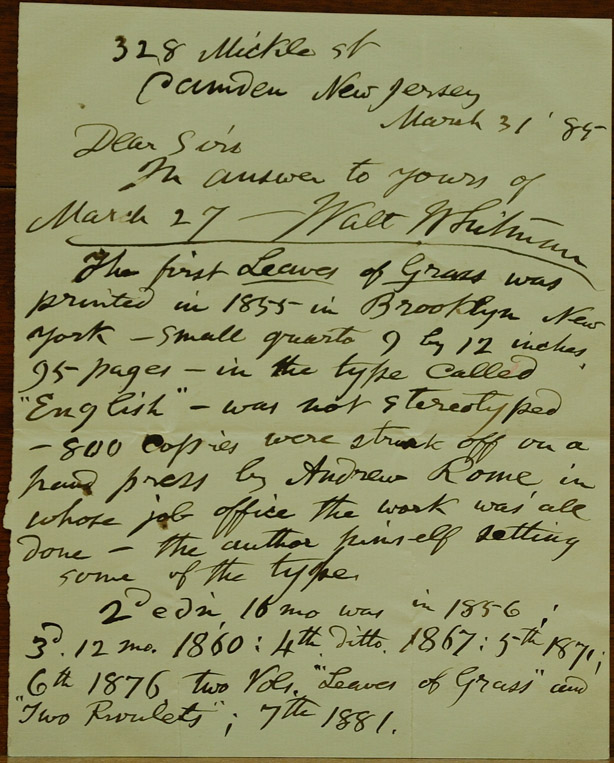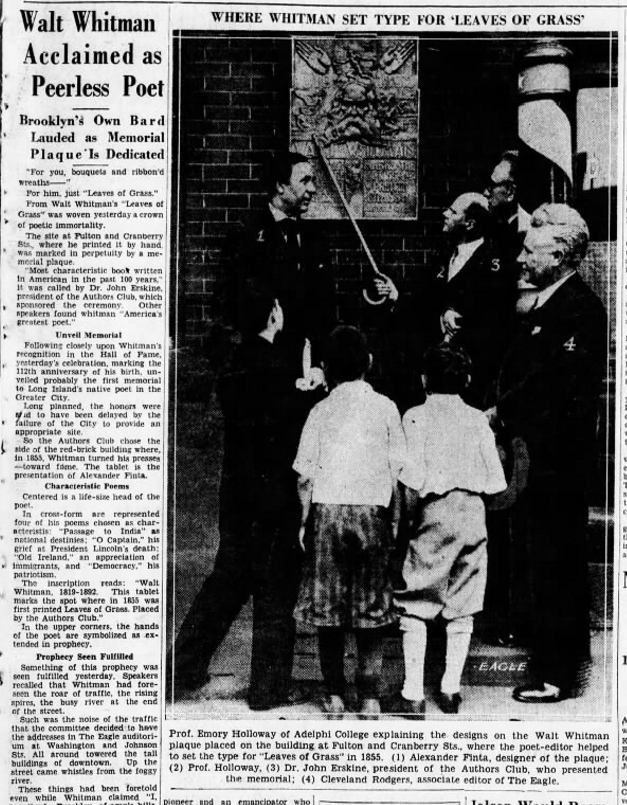ROME PRINT SHOP MEMORIAL
One of the Whitman Initiative’s central projects during the Poet’s 200th birthday celebration is to reconnect the public to the history of the Rome Print Shop in Brooklyn Heights where Whitman published the first edition of Leaves of Grass,
To achieve this end, we have designed a wonderful memorial for the site in collaboration with the incredibly talented Megan Lee which are very excited to share with you! We have also commissioned arborists William Logan to prepare the space for the installation and look forward to a announcing a ground breaking ceremony in the near future!
Today we are seeking the support of all Whitmaniacs far and wide to make this initiative a reality!!
Please visit the “Support Us” page on this site and donate to this great cause.
For more information, please contact info@waltwhitmaninitiative.org.
“The first Leaves of Grass was printed in 1855 in Brooklyn New York—small quarto 9 by 12 inches, 95 pages—in the type called “English”—was not stereotyped—800 copies were struck off on a hand press by Andrew Rome, in whose job office the work was all done—the author himself setting some of the type” (Walt Whitman to Unidentified Correspondents, 31 March 1885).
The Rome Brothers print shop was located in a three-story red brick building that once stood on the southwest corner of 98 Cranberry and Fulton Streets (now Cadman Plaza West). Owned and operated by Scottish immigrants Andrew and James Rome, the shop primarily printed legal documents, city and county reports, and sermons until 1855 when Andrew and his younger brother Tom worked with Whitman to publish the first edition of Leaves of Grass. Following their work on the first edition, the brothers maintained a productive working relationship with Whitman for many years, setting type for his new poems and printing proofs in 1858 and 1859 for future editions of Leaves of Grass.
Long after the Rome Brothers discontinued use of 98 Cranberry, the building continued to be connected to Whitman. On May 31, 1931, at a celebration of Whitman’s 102nd birthday, a bronze tablet, created by sculptor Alexander Finta, was dedicated and mounted on the side of the building to mark the site’s historic importance. It contained interpretations of four of Whitman’s poems: “Oh Captain, My Captain!”, “Old Ireland,” “Passage to India,” and “Great are the Myths.” Unfortunately, despite efforts by the Committee to Save the Walt Whitman Building, which included many local residents and notable writers Carl Sandburg, Robert Frost, Marianne Moore, Archibald MacLeish, Arthur Miller, and Malcolm Cowley, the property was eventually demolished in 1964 as part of the Cadman Plaza redevelopment plan.



